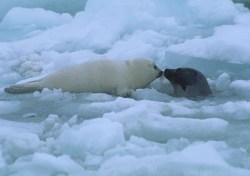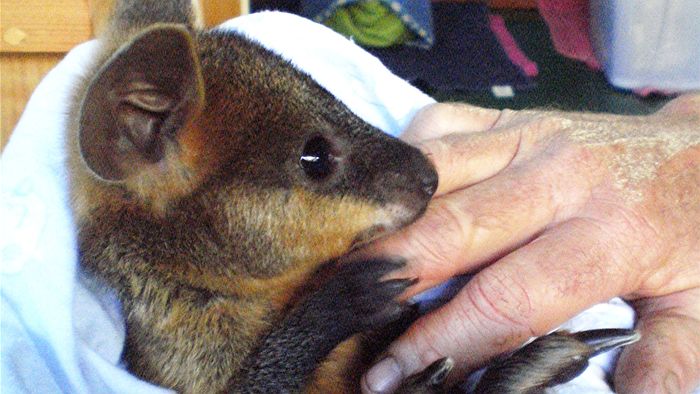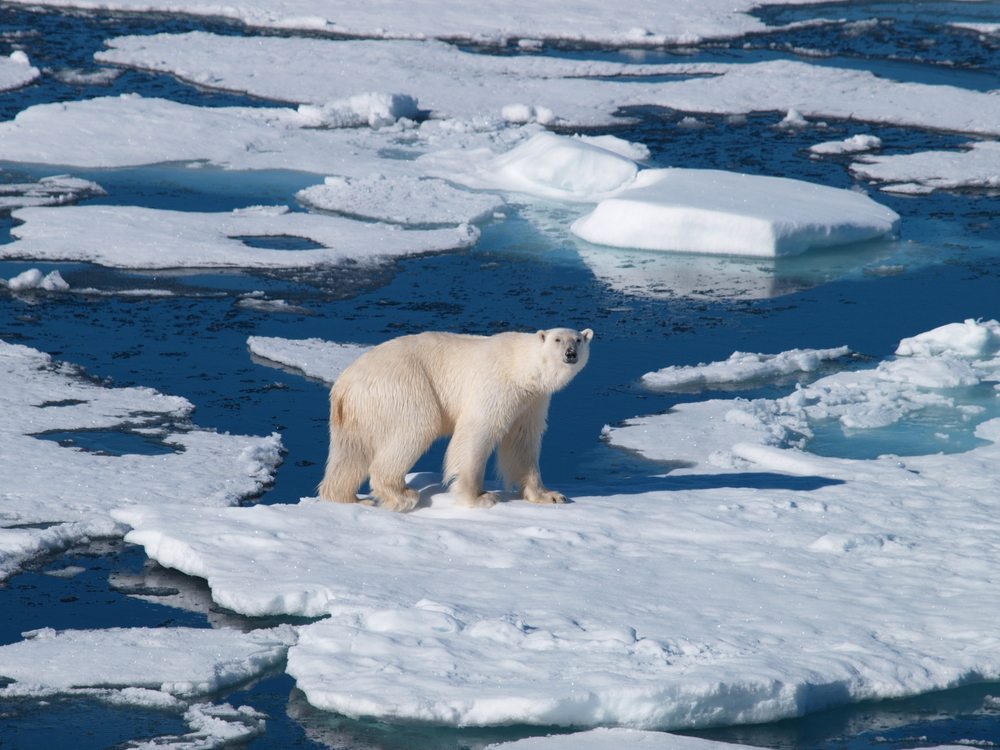
Visit GreenlandA harp seal and her pup: adorable but chemical-laced prey for polar bears.
A warming world is a cruel world for polar bears. Not only is their terrain melting beneath their feet. Now comes news that climate change is pushing East Greenland’s population to switch prey and increasingly eat types of seals that are loaded with chemical contaminants.
Polar bears living in East Greenland feed mainly on ringed seals, harp seals, and hooded seals. They may all sound the same to inexperienced seal-meat eaters like you and me. But these species of seals have different lifestyles that lead to different levels of chemical pollution in their meat.
Scientists studied the dietary habits of East Greenland’s polar bears from 1984 to 2011 and discovered a 42 percent fall in the amount of relatively clean ringed seal that they ate. In its place, the bears substituted more harp and hooded seals — species whose flesh contain higher levels of long-lived contaminants known as persistent organic pollutants. That’s because these species of seals, which are larger than ringed seals, are higher up in the food chains. It’s also because they are “subarctic” seals — they travel further south, closer to the industrialized world, where they swim and feed in more human-produced filth.
The scientists believe the changing diet is climate-related, in part because the dietary changes were most stark in the warmest years.
“Our results suggest that [East Greenland] bears are using subarctic seals as an increasingly important, albeit more contaminated, food resource,” the researchers wrote in a paper published recently in the journal Global Change Biology. “A shifting diet may have health consequences.”
Yuck, time to get those dirty seals out of your diets, polar bears!
Or not. The good news here is also the bad news. As Arctic sea ice continues to melt, the bears will find it harder to hunt the harp and hooded seals, which use the ice as pup-rearing platforms. And once that contaminated source of food has dried up, it could become frightfully difficult for the bears to find any food at all.
“This additional food source, subsequent to declines in ringed seal in the diet, may only be a temporary one,” the scientists wrote.




